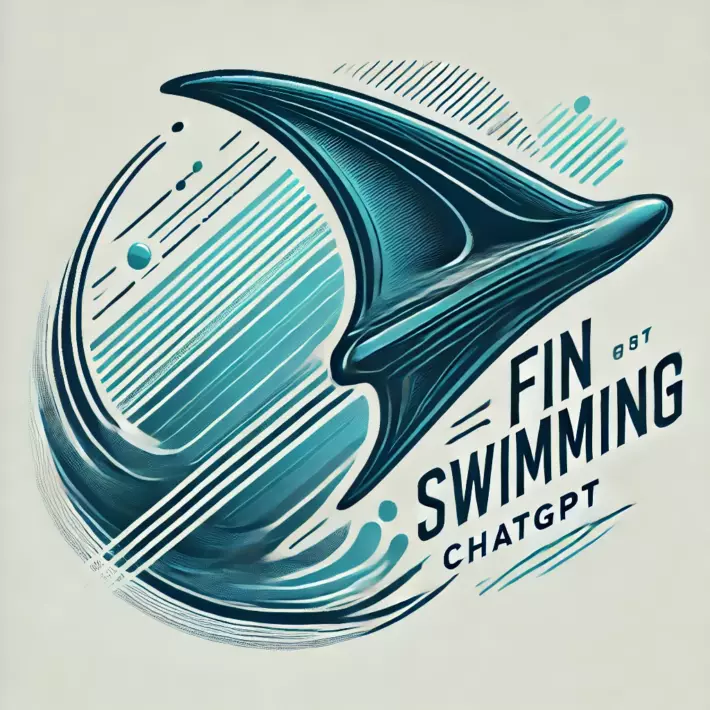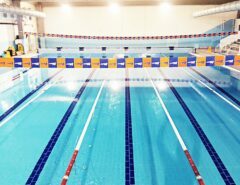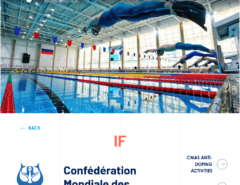Premise:
In the last year ChatGPT, and a lot of many Artificial Intelligences, spread all around the World. I’m trying to understand if this new technology is already ‘mature’ to be used with a good confidence on it. So, I’ve asked to ChatGPT the following question:
‘Write an article with 3000 words about CMAS history focusing especially on Finswimming’
This is the results. I haven’t changed a word. So let’s see what it says…maybe it’s wrong.
(Even the picture has been created by ChatGPT itself!)
The History of CMAS and the Rise of Finswimming
The Confédération Mondiale des Activités Subaquatiques (CMAS), or the World Confederation of Underwater Activities, holds a pivotal role in the development and regulation of underwater sports worldwide, especially finswimming. This article explores the historical backdrop of CMAS, its contribution to finswimming, and how the sport has evolved under its supervision.
1. The Birth of CMAS: An Underwater Vision
CMAS was officially founded on January 9, 1959, in Monaco, with an ambitious mission to standardize and regulate the numerous underwater activities emerging worldwide. Prior to CMAS, there was no overarching body to govern the diverse array of aquatic sports, including diving, spearfishing, underwater photography, and finswimming.
The organization’s founding was championed by Jacques-Yves Cousteau, a pioneering French oceanographer and filmmaker. Cousteau, alongside other notable figures from the global diving community, realized the need for an international body to oversee safety, training standards, and competition rules for underwater sports. CMAS was initially composed of 15 founding federations from Europe, Asia, and the Americas.
At its inception, CMAS focused primarily on activities such as scuba diving, freediving, and spearfishing, but as underwater sports diversified, finswimming became a significant area of focus.
2. The Origins of Finswimming
Finswimming, a sport that involves swimming with fins on the surface or underwater, had humble beginnings in the early 20th century. It evolved from the general use of fins in military training and lifeguarding, where the propulsion benefits of fins were utilized to move more swiftly through water.
The development of finswimming as a competitive sport began in the post-World War II era. Divers and swimmers began experimenting with fins for both speed and efficiency, leading to informal competitions. In the 1960s, finswimming competitions began to gain popularity in Europe, particularly in Eastern Bloc countries like the Soviet Union, Hungary, and Czechoslovakia, where it was often practiced alongside spearfishing and diving competitions.
3. CMAS and the Formalization of Finswimming
Finswimming’s rise to prominence within CMAS came as a result of the need to distinguish it from other forms of swimming and diving. In 1963, just a few years after the founding of CMAS, the organization introduced finswimming as an official sport with standardized rules and formats. This was a monumental step for the sport, allowing it to be practiced under a unified set of guidelines, thus laying the foundation for future international competitions.
Initially, finswimming was seen as a niche activity within the larger underwater sports community. However, as the sport grew in popularity, it attracted a larger, more diverse pool of athletes. The appeal of finswimming lay in its speed and power—athletes could achieve much faster swimming times using fins than in traditional swimming.
CMAS’s role in establishing the rules for finswimming competitions was critical. It created categories for different types of finswimming:
- Surface Swimming (SF): Swimmers propel themselves using fins while on the water’s surface, breathing through a snorkel.
- Apnea Swimming (AP): Athletes swim underwater in a single breath, competing in short-distance races.
- Immersion Swimming (IM): Swimmers use a scuba tank for breathing and race underwater for longer distances.
4. Finswimming’s Golden Age: The 1970s and 1980s
By the 1970s, finswimming had established itself as a major competitive sport, particularly in Europe and Asia. CMAS organized the first Finswimming World Championships in 1976, hosted in Hanover, West Germany. This marked the first time that athletes from around the world could compete against each other under standardized rules.
The 1970s and 1980s are often regarded as the golden age of finswimming. Eastern European countries dominated the sport, with the Soviet Union, East Germany, and Hungary producing some of the fastest finswimmers in history. Their athletes were known for their rigorous training regimes, innovative techniques, and advanced equipment. Monofins, which were first developed in the Soviet Union in the 1960s, became widely used during this period and revolutionized the sport by allowing athletes to swim even faster.
Finswimming’s inclusion in the World Games, a multi-sport event for sports not contested in the Olympics, further solidified its reputation as a high-performance discipline. The World Games first featured finswimming in 1981, and it has remained a regular feature ever since.
5. Technological Advancements in Finswimming
One of the defining characteristics of finswimming is its reliance on specialized equipment, most notably fins and monofins. These have evolved dramatically over the decades, thanks to advancements in materials science and engineering.
- Monofins: Developed in the 1960s, monofins are designed to replicate the tail motion of dolphins, allowing swimmers to generate incredible speed. Early monofins were made from rubber, but modern versions use high-tech materials like carbon fiber and fiberglass, making them lighter and more flexible.
- Bifins: Traditional bifins, or dual fins, are also used in competitive finswimming. These have become increasingly sophisticated, with designs that minimize drag and maximize propulsion.
CMAS has played a pivotal role in regulating the use of this equipment in competitions, ensuring that all athletes have access to fair and equal conditions. Rules regarding the size, material, and design of fins are strictly enforced to maintain the integrity of the sport.
6. Finswimming’s Global Growth and CMAS Expansion
Throughout the 1990s and 2000s, finswimming’s popularity continued to grow, particularly in Asia. Countries like China and Korea began to develop world-class finswimming programs, challenging the dominance of European nations. CMAS, which had primarily been European-centric in its early years, expanded its reach to include a broader array of member nations from around the world.
CMAS continued to organize international competitions, including the CMAS World Cup and the CMAS European Championships. These events became the premier showcases for the world’s top finswimmers, drawing athletes from dozens of countries.
One of the key drivers of finswimming’s growth has been its appeal to young athletes. The sport offers a unique combination of speed, grace, and athleticism that sets it apart from other aquatic sports. CMAS has made a concerted effort to promote finswimming at the youth level, organizing competitions for junior finswimmers and providing training resources for coaches and athletes.
7. The Role of Finswimming in the Modern CMAS Structure
Today, finswimming is one of the most prominent sports under the CMAS umbrella. It is included in nearly every major CMAS event, including the CMAS Games, the World Games, and regional championships.
In addition to organizing competitions, CMAS is responsible for overseeing the development of finswimming at the grassroots level. This includes setting standards for coaching, training, and safety, as well as promoting the sport through outreach and education programs.
The CMAS World Championships remain the pinnacle of finswimming competition, attracting the best athletes from around the world. The event is held every two years and includes races in multiple disciplines and distances, ranging from short sprints to long-distance endurance events. CMAS also sanctions world records in finswimming, recognizing the achievements of the fastest athletes in the sport.
8. Challenges and the Future of Finswimming
Despite its growth, finswimming faces several challenges as it looks to the future. One of the biggest obstacles is the sport’s relative obscurity outside of Europe and Asia. While finswimming is popular in countries like Italy, Russia, and China, it has yet to achieve widespread recognition in countries like the United States or Australia, where traditional swimming dominates.
Another challenge is the sport’s reliance on specialized equipment, which can be expensive and difficult to access in some parts of the world. CMAS has worked to address this issue by promoting initiatives to make finswimming more accessible to athletes in developing countries, but there is still work to be done.
Nevertheless, finswimming has a bright future. The sport continues to evolve, with new training techniques, equipment innovations, and talented athletes pushing the boundaries of what is possible. CMAS remains committed to promoting finswimming at all levels, from grassroots programs to elite international competitions.
9. Conclusion: Finswimming’s Enduring Legacy in CMAS
From its humble beginnings as a niche underwater activity to its current status as a major competitive sport, finswimming has come a long way. Thanks to the efforts of CMAS and the dedication of athletes and coaches around the world, finswimming has established itself as a unique and exciting discipline within the broader world of aquatic sports.
CMAS’s commitment to the development of finswimming has been unwavering. The organization’s efforts to standardize the sport, promote international competition, and support the next generation of athletes have been instrumental in finswimming’s growth. As the sport continues to evolve, CMAS will undoubtedly play a key role in shaping its future.
Finswimming remains a testament to the power of human ingenuity and athleticism, offering a glimpse of what is possible when athletes push themselves to the limits of speed and endurance in the water.







